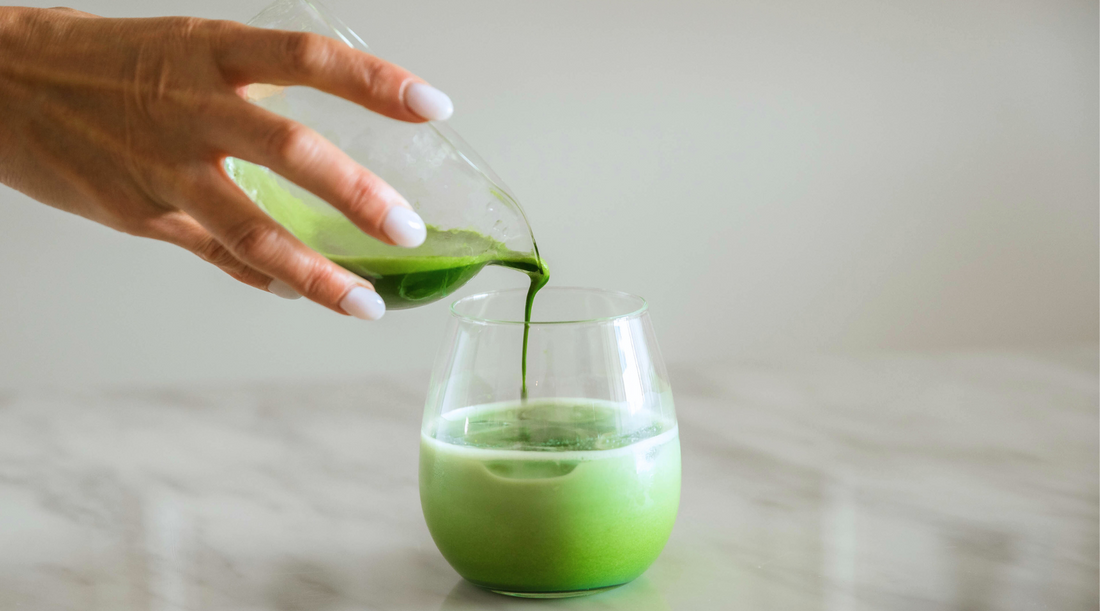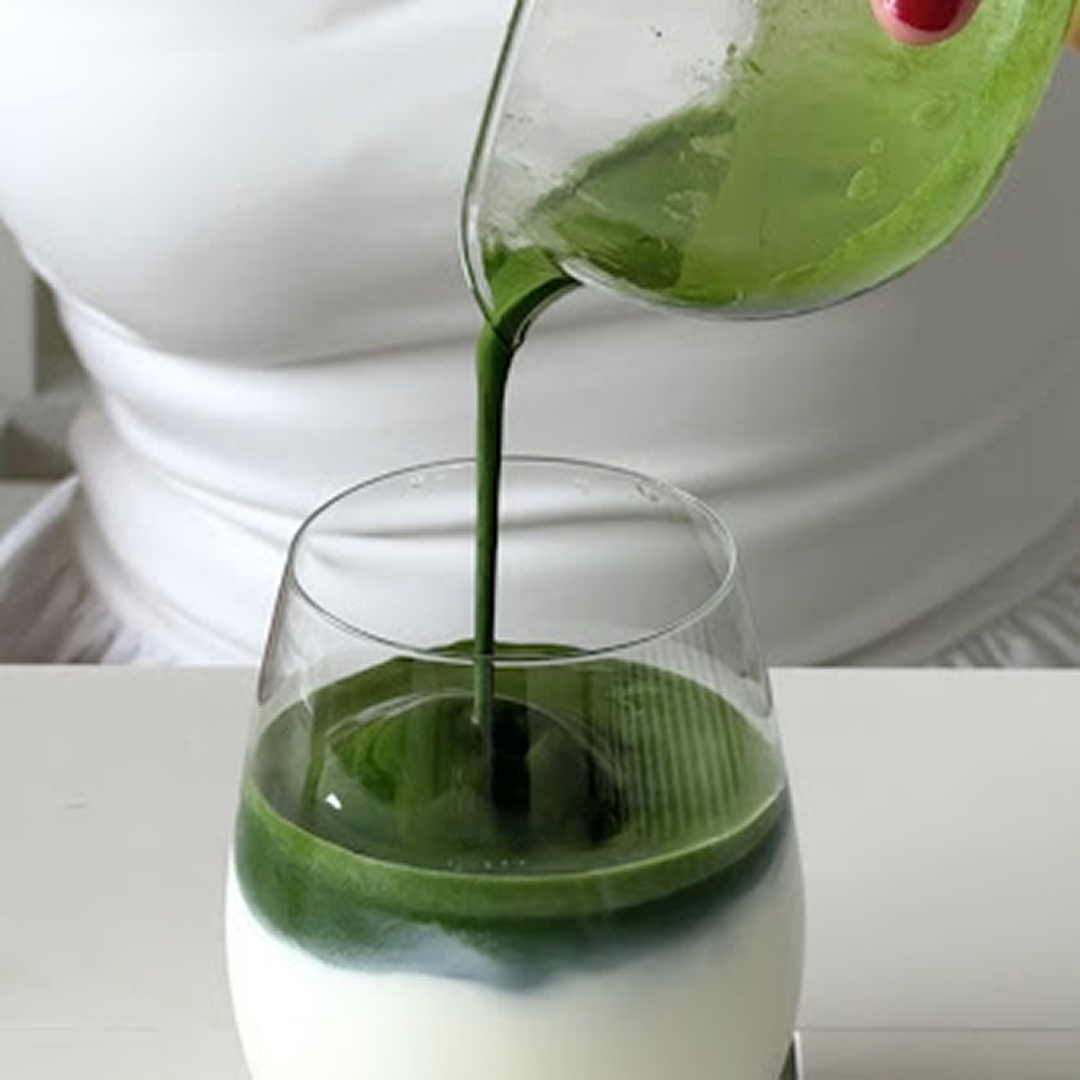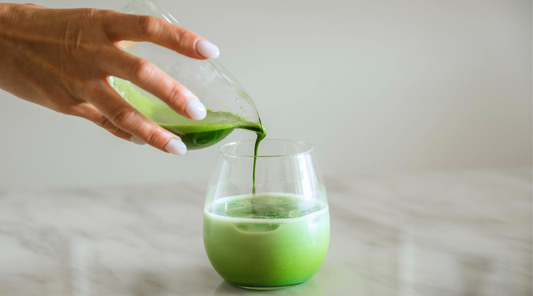
Does Matcha Need to Be Refrigerated? Storage Tips from Japanese Tea Experts
Share
Short answer: Yes. Unopened matcha keeps best refrigerated between 3°C and 5°C. Once opened, store a small amount at room temperature in an airtight, opaque tin to prevent condensation.
When you open a tin of matcha, its vibrant green colour and fresh aroma instantly stand out. But matcha is incredibly delicate. Light, air, heat, and humidity can quickly strip away its flavour, nutritional benefits, and even that signature emerald hue. Storing it the right way ensures your matcha stays fresh, potent, and enjoyable for weeks or months.
At Maison Koko, we believe that proper care of your tea is just as important as choosing high-quality matcha in the first place. In this guide, you’ll learn the science behind matcha storage, common mistakes to avoid, and best practices backed by Japanese tea tradition.
The Ideal Temperature for Matcha
The optimal storage temperature for matcha is between 3°C to 5°C (32°F to 41°F), which is the same range as your refrigerator. Keeping matcha cool slows down oxidisation and protects sensitive compounds like catechins (powerful antioxidants) and L-theanine (the amino acid responsible for matcha’s calming yet focused energy).
According to the Japanese Green Tea, this temperature range is essential for preserving freshness without damaging delicate leaf compounds.
However, refrigeration comes with one important caveat: moisture. If you open a chilled tin straight out of the fridge, condensation can form inside and ruin the powder’s smooth, fine texture. Always allow your tin to sit at room temperature for 15–20 minutes before opening it.
💡 Pro tip: If you drink matcha every day, consider dividing your stash. Keep a small tin at room temperature for daily use, and store the rest in a larger airtight container in the fridge. This way, you balance convenience with maximum freshness.
The Enemies of Fresh Matcha
Matcha’s vibrancy is a sign of quality, but that beauty is fleeting without proper storage. Four main culprits can destroy its taste and benefits:
- Light: Sunlight, especially UV rays, can bleach matcha’s green pigments and degrade its antioxidants. This is why premium matcha is always sold in opaque packaging rather than transparent jars.
- Air (oxygen): Once exposed, matcha begins to oxidise rapidly. Oxidisation dulls flavour, reduces nutrient content, and shifts the colour from bright green to yellowish brown.
- Heat: Warm environments accelerate the breakdown of matcha’s natural compounds. A study published in the National Library of Medicine shows that catechins, one of matcha’s key antioxidants, degrade more quickly under high heat.
- Moisture: Even a small amount of humidity can cause matcha to clump, form mould, or develop a stale, hay-like flavour.
Protecting against these enemies is simple: airtight, opaque tins stored in cool, dry environments. This ensures your matcha stays as fresh as the day it was milled.
For a full guide on matcha storage, check out our article "How to Store Matcha to Keep It Fresh, Vibrant & Green."
How Long Does Matcha Last?
Unopened, high-quality matcha can last 6–12 months when stored correctly in the fridge. Once opened, however, it is best enjoyed within 4–8 weeks to capture the full umami and delicate sweetness that defines ceremonial-grade tea.
Ceremonial matcha is more sensitive due to its refined texture and subtle flavour notes. In contrast, culinary-grade matcha can remain usable a bit longer, since it’s typically whisked into lattes, baked goods, or smoothies where small changes in flavour are less noticeable.
👉 For inspiration, explore our Matcha Recipes, where freshness makes a real difference in both taste and presentation.
Best Practices for Storing Matcha
Proper matcha storage is not complicated, but it does require mindfulness. Here are key practices explained in detail:
- Use airtight, opaque containers: Glass jars may look beautiful, but they expose matcha to light. Tins or resealable foil pouches are far superior because they block both air and UV rays.
- Refrigerate unopened matcha: This extends its shelf life, especially if you’re stocking up on multiple tins. Once opened, though, frequent refrigeration risks condensation. In that case, store a smaller tin at room temperature and keep the rest sealed and refrigerated.
- Minimise air exposure: Transferring matcha between containers or leaving the tin open too long introduces unnecessary oxygen. Always reseal tightly immediately after scooping.
- Protect from strong odours: Matcha is highly porous and will absorb smells from nearby foods. If stored in the fridge, keep it away from onions, garlic, or coffee beans.
- Buy smaller quantities: It’s tempting to purchase in bulk, but matcha doesn’t age like wine. Buying smaller tins ensures you always enjoy matcha at peak freshness.
By following these practices, you don’t just preserve matcha. You preserve the ritual of preparing a bowl that tastes just as the tea master intended.

Storing Matcha for Travel or Gifting
Matcha makes a thoughtful and luxurious gift, but only if it arrives fresh. When gifting, ensure it’s packaged in airtight tins. At Maison Koko, our matcha is sealed to lock in flavour and aroma, making it a perfect present for tea lovers.
For travel, store matcha in a cool, insulated bag to avoid temperature swings. Never leave it in a hot car or under direct sunlight, as even short exposure can degrade quality.
Common Storage Mistakes to Avoid
Many tea lovers unknowingly shorten the life of their matcha with simple mistakes:
- Leaving tins on the counter, where indirect sunlight and fluctuating kitchen temperatures speed up degradation.
- Storing near aromatic foods such as garlic, spices, or coffee, which matcha easily absorbs.
- Using oversized containers that hold too much air, accelerating oxidisation.
- Repeated freezing and thawing. While freezing unopened tins is acceptable for long-term storage, constant temperature swings damage freshness.
- Each of these mistakes is preventable with a little care, and the reward is consistently vibrant, flavourful tea.
Final Thoughts
Matcha is more than a drink; it’s a ritual that connects you to centuries of Japanese tea culture. The way you store your matcha matters just as much as how you whisk it. By protecting it from light, heat, air, and moisture, you’ll ensure every cup reflects the care and tradition behind it.
At Maison Koko, we make it easy to enjoy matcha worth preserving. Whether you’re whisking up a ceremonial bowl, blending a latte, or experimenting with baking, start with the freshest tea possible and store it with care.
FAQs about Storing Matcha
Does matcha need to be refrigerated?
Yes, refrigeration is the best way to extend the shelf life of unopened matcha. Once opened, you can keep a small tin at room temperature for convenience, but always store the rest in the fridge in an airtight container. Just remember to let the tin warm up to room temperature before opening to avoid condensation.
Can you freeze matcha?
Freezing unopened matcha is fine for long-term storage, especially if you’ve bought multiple tins. But avoid repeated freezing and thawing, as it causes condensation and degrades freshness.
How long does matcha last once opened?
For the best flavour and colour, finish your opened matcha within 4–8 weeks. After that, it may lose some of its vibrancy and umami, even if it’s technically safe to drink.
Why does matcha turn yellow or brown?
This usually means it’s been exposed to too much air, heat, or light. Oxidation breaks down chlorophyll, which gives matcha its signature emerald hue, and reduces both flavour and nutrients.
What’s the biggest mistake people make when storing matcha?
Leaving it in a clear glass jar on the counter. While pretty, it exposes the powder to light, air, and fluctuating temperatures, all of which shorten its life. Opaque, airtight tins are always better.








